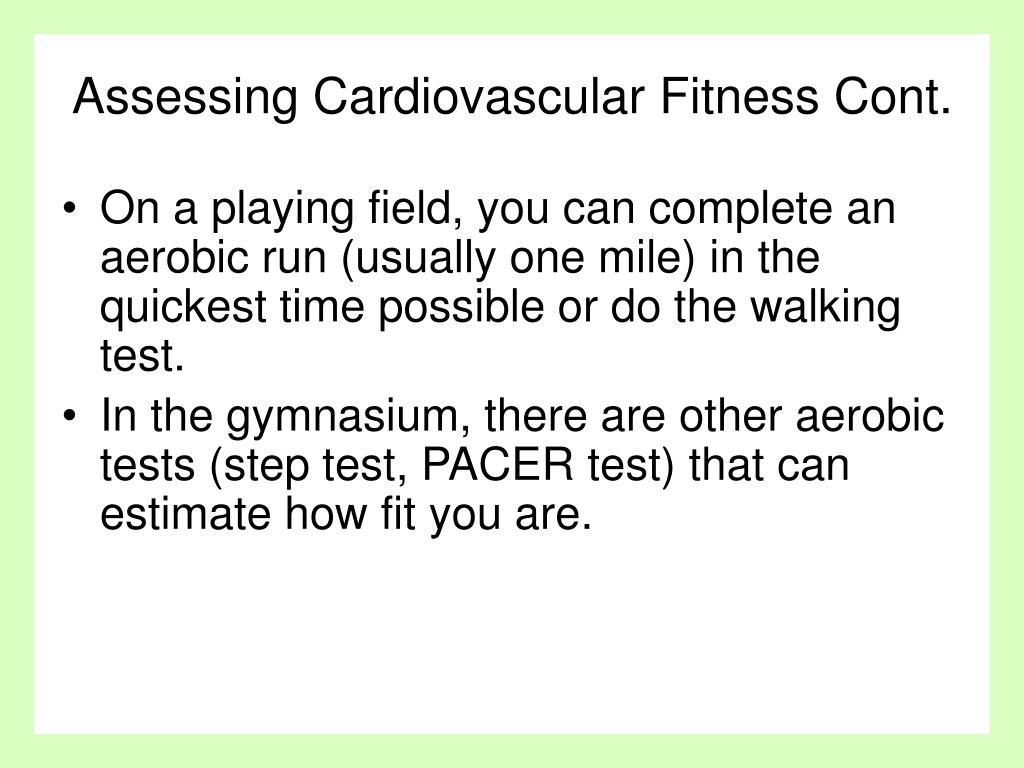

The purposes of this study were to 1) develop a CRF (peak oxygen uptake ( )) prediction model applicable to both men and women with a greater fitness range than the Cooper model and 2) evaluate the accuracy of HRR during a 12-minute run/walk EFT in an asymptomatic, low-risk population. The validity of HRR measured by a HRM outside of clinical settings, however, has not been examined. In addition, use of a HRM during the EFT affords continuous and accurate measurement of heart rate in response to exercise and during recovery. age, sex, and body composition), , therefore, may improve CRF estimates. Development of a model based on a diverse range of fitness levels that includes subject characteristics (e.g. Application of the Cooper model in similar populations of moderately fit men has yielded accurate estimates of CRF – however, CRF predictions are often underestimated when the model has been used for women or subjects with lower fitness levels. min −1) and 12-minute run/walk distances (1770–3218 m) were tested.In the original study, 115 male, military officers with an average age of 22 years (range 17 to 52) and a moderate range of values (31–59 ml A regression model, developed by Cooper in 1968, has been widely used to estimate CRF (peak oxygen uptake ( )) for a 12-minute run/walk EFT, but the predictive accuracy of the model is dependent on the population being tested. Exercise field tests (EFTs) completed while wearing commercial heart rate monitors (HRMs) may provide an inexpensive alternative for risk assessment in large populations, but improved CRF prediction models and validation of HRR measures are needed. Clinical exercise tolerance tests (ETTs) to quantitatively assess cardiorespiratory fitness (CRF) and heart rate recovery (HRR) post-exercise can improve risk stratification –, but the expense of testing large populations, and low primary care utilization rates in young adults limits clinical efforts for early risk detection. Risk assessment is the foundation for primary prevention of future cardiovascular disease, yet attempts to evaluate the large population of asymptomatic individuals are limited. The funders had no role in study design, data collection and analysis, decision to publish, or preparation of the manuscript.Ĭompeting interests: The authors have declared that no competing interests exist. This is an open-access article distributed under the terms of the Creative Commons Attribution License, which permits unrestricted use, distribution, and reproduction in any medium, provided the original author and source are credited.įunding: This project was supported by the National Center for Advancing Translational Sciences (NCATS), National Institutes of Health (NIH), through grant #UL1 TR000002, and by an institutional K30, 2 UL1 RR024146-06 in Davis, CA, USA. Received: DecemAccepted: ApPublished: May 21, 2014Ĭopyright: © 2014 Coolbaugh et al.

PLoS ONE 9(5):Įditor: Vincenzo Lionetti, Scuola Superiore Sant'Anna, Italy Result - Out of the 40 subjects, 9 subjects had an average score, while 16 of them were below average and the remaining 15 subjects had poor cardiorespiratory functioning.Ĭonclusion –The cardio respiratory fitness as measured through Pulse rate, Pulse recovery time and SpO2 levels using YMCA-TMST was poor in post Covid Patients irrespective of the fact that they were hospitalized or were under isolation.Citation: Coolbaugh CL, Anderson IB, Wilson MD, Hawkins DA, Amsterdam EA (2014) Evaluation of an Exercise Field Test Using Heart Rate Monitors to Assess Cardiorespiratory Fitness and Heart Rate Recovery in an Asymptomatic Population.

The post test heart rates were then compared with the YMCA rating scale. Pre-test and post-test vitals were recorded. Post Covid patients (1-3 months) between age group of 30-45 years including both hospitalized and patients who were under isolation were included in the study. Methodology -This study was a cross sectional observational study where 56 post-covid patients were selected using convenient sampling. Thus, there’s a need to study the Cardiorespiratory functioning (CRF) in post covid patients and thus the study is undertaken. Even though Covid-19 is a respiratory disease, but is causes a great damage to various other organs of the body including the heart. Infection caused by SARS-CoV-2 virus may range from a asymptomatic to a broad variety of symptoms, ranging from mild upper respiratory tract infection to life-threatening sepsis. Aim: To assess cardiorespiratory fitness in post covid patients using YMCA 3 min step test.īackground: -Coronavirus disease 2019 (COVID-19) is caused by a novel beta-coronavirus known as Severe Acute Respiratory Syndrome Coronavirus 2 (SARS-CoV-2).


 0 kommentar(er)
0 kommentar(er)
